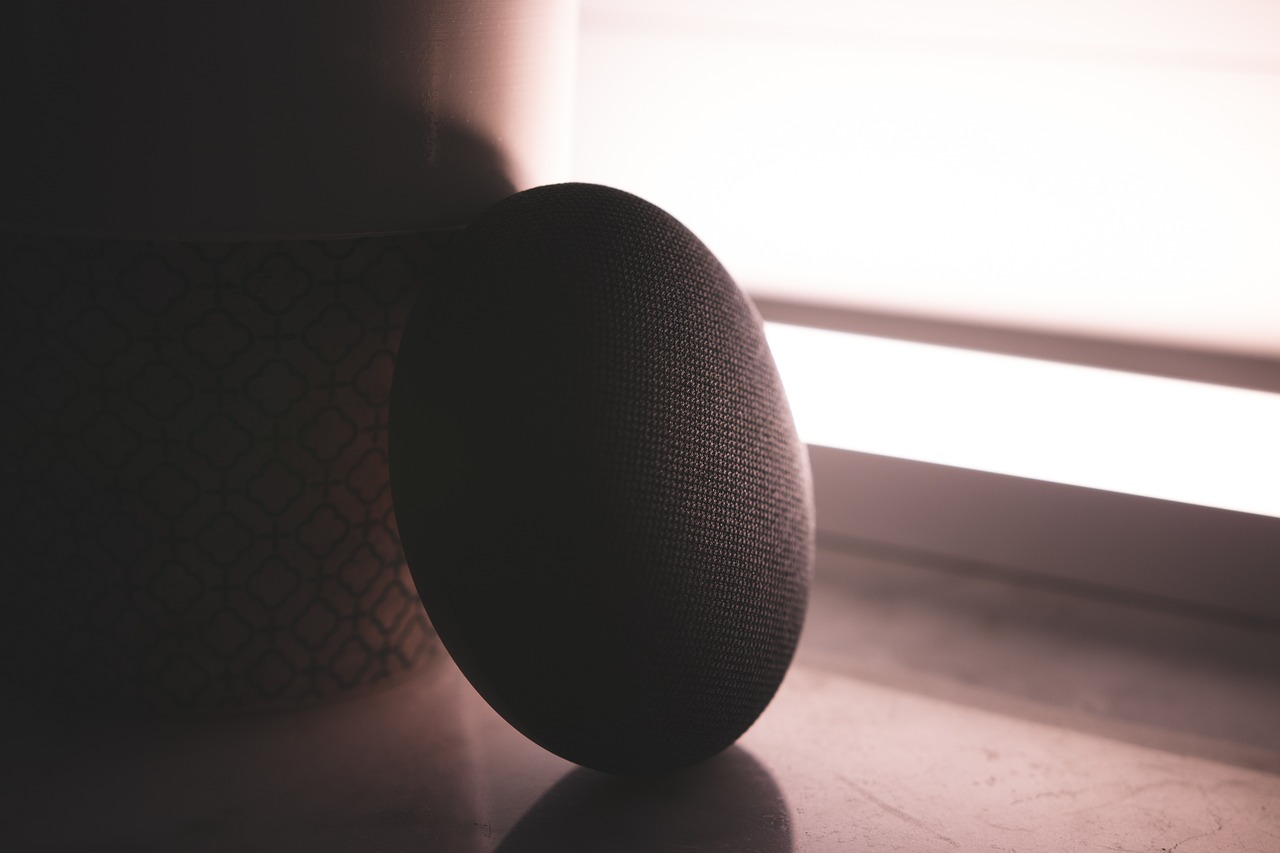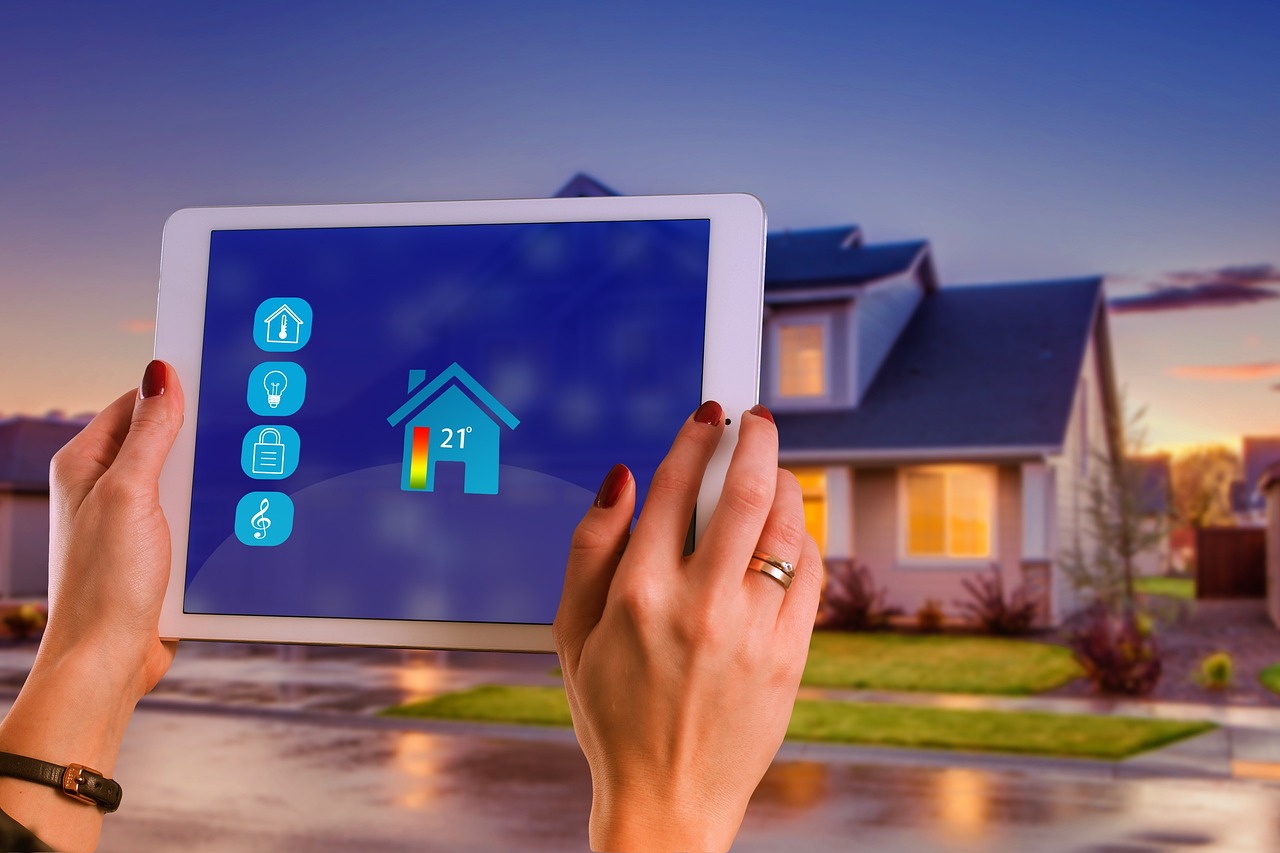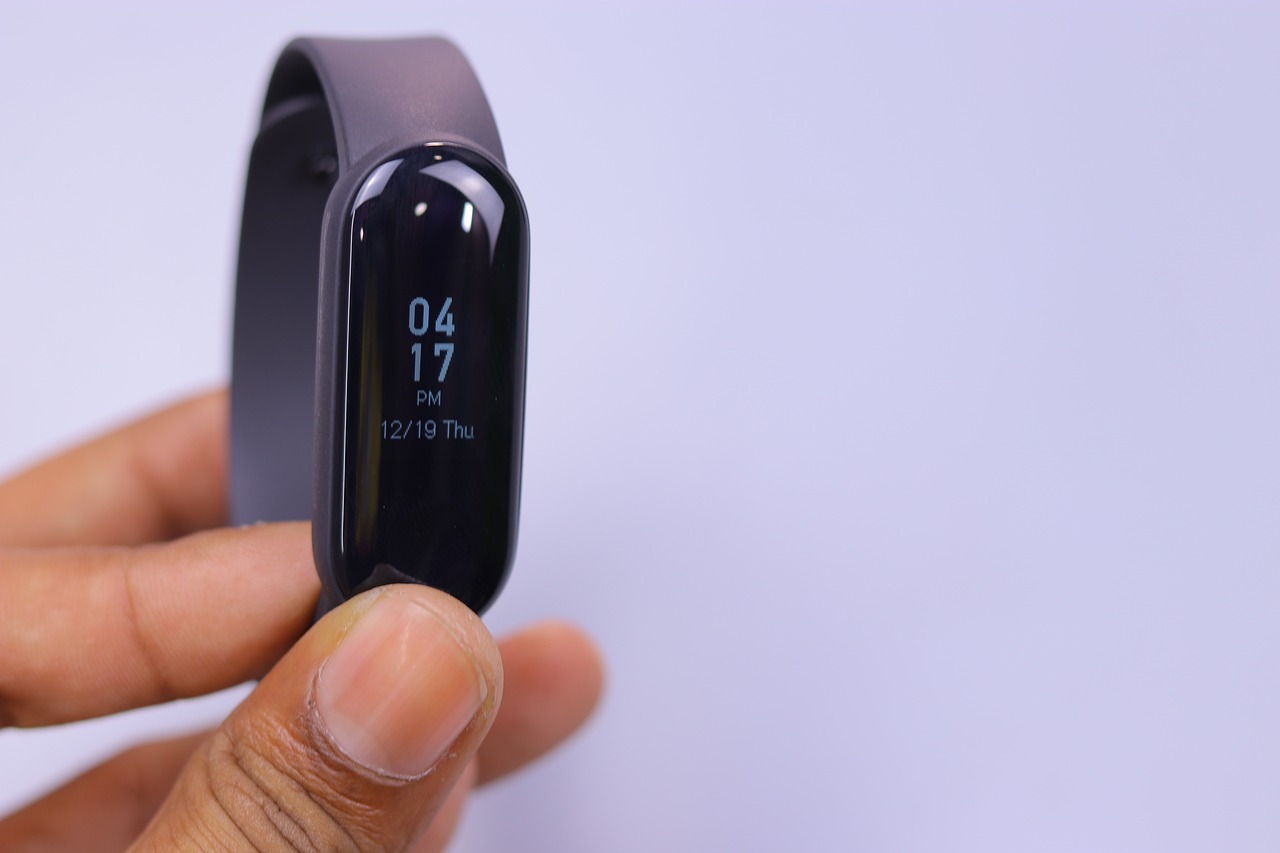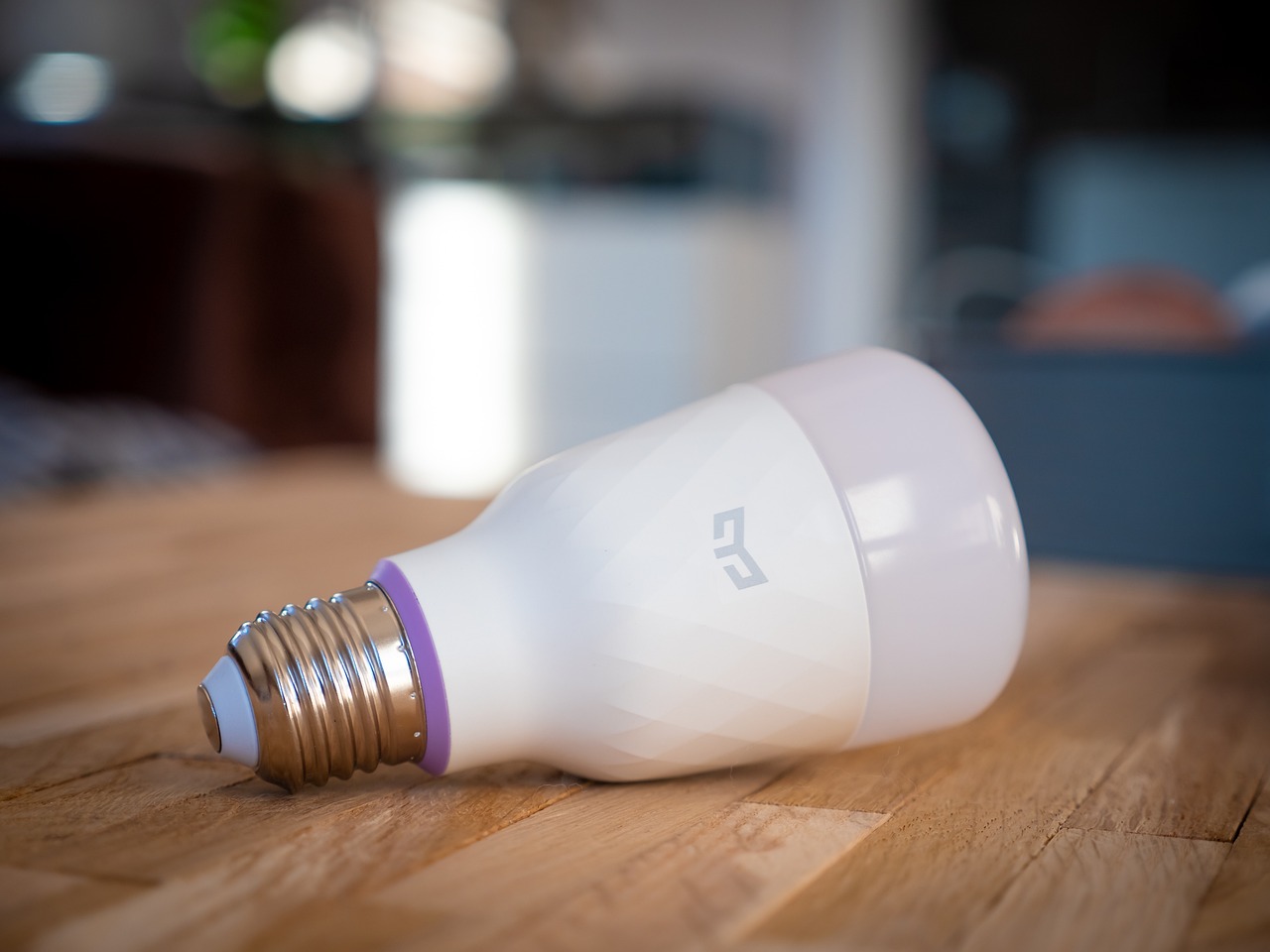How Good Are Smart Doorbells for Home Security
In today's world, where home security is a top priority for many, smart doorbells have emerged as a revolutionary solution. These devices are not just your regular doorbells; they are equipped with cutting-edge technology that can significantly enhance your home's safety. Imagine being able to see who is at your door, interact with them, and monitor your property—all from the comfort of your couch or even while you're on vacation. Sounds amazing, right? But just how effective are these smart gadgets when it comes to bolstering home security? In this article, we will dive deep into the features, benefits, and potential drawbacks of smart doorbells, and how they stack up against traditional security measures.
Smart doorbells are innovative devices that bring together the simplicity of traditional doorbells and the power of modern technology. These gadgets typically include a built-in camera, two-way audio, and mobile connectivity. What does this mean for you? Well, it means that you can monitor your front door from anywhere in the world using your smartphone. If a delivery arrives while you're at work, you can greet the delivery person without even opening your door! This level of control and convenience is what makes smart doorbells so appealing to homeowners.
When it comes to smart doorbells, the features they offer can make a world of difference in terms of security. Some of the standout functionalities include:
- Motion Detection: This alerts you when someone approaches your door, allowing you to take action if needed.
- Night Vision: Many models come equipped with infrared technology, ensuring you can see clearly even in low light conditions.
- Cloud Storage: This allows you to save video footage for later review, which can be crucial for evidence in case of an incident.
The video quality of smart doorbells can significantly impact their effectiveness. Higher resolution cameras provide clearer images, making it easier to identify visitors or potential intruders. Think about it: if someone were to approach your door with malicious intent, wouldn't you want to be able to see their face clearly? This is where the distinction between HD and standard definition comes into play.
High-definition (HD) cameras offer superior image clarity compared to standard-definition models. This difference can be crucial when identifying faces or license plates during an incident. In the heat of the moment, a pixelated image won’t do you any favors. In contrast, a crisp HD image can provide law enforcement with the information they need to take action.
The field of view is another critical factor that determines how much area a smart doorbell can monitor. A wider angle can capture more of the surroundings, enhancing overall security coverage. If your doorbell can see not just the front porch but also parts of the driveway or sidewalk, you’re getting more bang for your buck!
Many smart doorbells can seamlessly integrate with other smart home devices, creating a cohesive security system. Imagine your doorbell, security cameras, and alarm system all working together, alerting you to any unusual activity. This integration allows for automated responses and centralized control, making it easier to manage your home security.
Smart doorbells offer a plethora of benefits that make them an attractive option for homeowners. These include:
- Increased Convenience: You can answer the door from anywhere, which is especially handy for deliveries.
- Enhanced Security: With features like motion detection and video recording, you can keep a close eye on your property.
- Remote Communication: Two-way audio enables you to communicate directly with visitors without opening the door.
Remote monitoring capabilities allow homeowners to keep an eye on their property from anywhere. This feature provides reassurance and can deter potential intruders. If someone approaches your door, you can receive an instant alert on your phone, giving you the power to act quickly.
Two-way audio is another fantastic feature that allows homeowners to communicate directly with visitors without having to open the door. This functionality can be particularly useful for deliveries or unexpected guests. You can simply ask the delivery person to leave the package at your doorstep while you're still in your pajamas!
Despite their advantages, smart doorbells also come with potential drawbacks that homeowners should consider. These include privacy concerns, reliance on Wi-Fi, and the possibility of hacking. Let’s break these down a bit.
Privacy concerns arise from the constant video recording capabilities of smart doorbells. Homeowners must ensure they comply with local laws regarding surveillance and respect neighbors' privacy. After all, you wouldn’t want to unintentionally invade someone else’s space!
Smart doorbells require a stable internet connection to function properly. In areas with poor connectivity, their effectiveness may be compromised, limiting their security benefits. If your Wi-Fi goes down, so does your ability to monitor your front door.
When evaluating home security options, it’s essential to compare smart doorbells with traditional systems. Each has its strengths and weaknesses, making them suitable for different needs. For instance, traditional systems may offer more comprehensive coverage but at a higher cost.
The cost of smart doorbells can vary significantly compared to traditional security systems. Homeowners should weigh the initial investment against ongoing monitoring fees and maintenance. In many cases, smart doorbells can be a more budget-friendly option.
Smart doorbells are generally easier to install than traditional security systems, often requiring minimal tools and expertise. This convenience can be a deciding factor for many homeowners who may not want to deal with the hassle of professional installation.
Q: Do smart doorbells require a subscription service?
A: Some smart doorbells offer cloud storage and advanced features that may require a subscription, while others provide basic functionalities without additional fees.
Q: Can smart doorbells work during a power outage?
A: Most smart doorbells require a consistent power supply, so they may not function during a power outage unless you have a backup power source.
Q: Are smart doorbells secure from hacking?
A: While no device is completely immune to hacking, you can enhance security by using strong passwords, enabling two-factor authentication, and keeping the firmware updated.

Understanding Smart Doorbells
This article explores the effectiveness of smart doorbells in enhancing home security. We will discuss their features, benefits, potential drawbacks, and how they compare to traditional security measures.
Smart doorbells are innovative devices that blend the simplicity of traditional doorbells with cutting-edge technology. Imagine being able to see who’s at your door without even getting up from the couch! These devices typically incorporate a camera, two-way audio, and mobile connectivity, allowing homeowners to monitor their front door remotely, no matter where they are. Whether you're at work, on vacation, or just lounging at home, a smart doorbell keeps you connected to your front entrance.
One of the most appealing aspects of smart doorbells is their ability to send real-time notifications to your smartphone. When someone approaches your door, you’ll receive an alert, enabling you to view live video footage through an app. This feature not only enhances security but also allows for quick responses to unexpected visitors. For instance, if a delivery person arrives while you’re out, you can communicate with them directly through the two-way audio feature, instructing them where to leave the package.
Moreover, smart doorbells often come equipped with additional functionalities that cater to varying homeowner needs. Many models include motion detection capabilities, which can trigger recording when someone approaches, and some even offer night vision for enhanced visibility in low-light conditions. These features work together to create a robust security system that can deter potential intruders and provide peace of mind.
As technology continues to evolve, smart doorbells are becoming increasingly integrated with other smart home devices. This integration allows for a cohesive security system where all devices communicate with each other. For example, if your smart doorbell detects motion, it could trigger your smart lights to turn on, illuminating the area and possibly scaring off an intruder. Such automated responses enhance the overall security of your home, making it a fortress against unwanted visitors.
In summary, smart doorbells are more than just a modern twist on an old concept; they represent a significant leap forward in home security technology. With their array of features and the convenience they offer, they are quickly becoming a staple in many households. However, as with any technology, it's essential to understand how they work and what they can offer to ensure they meet your specific security needs.
Smart doorbells come equipped with various features such as motion detection, night vision, and cloud storage. These functionalities enhance security and provide peace of mind for homeowners.
The video quality of smart doorbells can greatly impact their effectiveness. Higher resolution cameras offer clearer images, making it easier to identify visitors and potential intruders.
High-definition (HD) cameras provide superior image clarity compared to standard-definition models. This difference can be crucial when identifying faces or license plates during an incident.
The field of view determines how much area a smart doorbell can monitor. Wider angles can capture more of the surroundings, enhancing overall security coverage.
Many smart doorbells can integrate seamlessly with other smart home devices, creating a cohesive security system. This integration allows for automated responses and centralized control.
Smart doorbells offer numerous benefits, including increased convenience, enhanced security, and the ability to communicate with visitors remotely. These advantages make them a popular choice among homeowners.
Remote monitoring capabilities allow homeowners to keep an eye on their property from anywhere. This feature provides reassurance and can deter potential intruders.
Two-way audio enables homeowners to communicate directly with visitors without opening the door. This functionality can be particularly useful for deliveries or unexpected guests.
Despite their advantages, smart doorbells also have potential drawbacks, including privacy concerns, reliance on Wi-Fi, and the possibility of hacking. Homeowners should be aware of these issues before installation.
Privacy concerns arise from the constant video recording capabilities of smart doorbells. Homeowners must ensure they comply with local laws regarding surveillance and respect neighbors' privacy.
Smart doorbells require a stable internet connection to function properly. In areas with poor connectivity, their effectiveness may be compromised, limiting their security benefits.
When evaluating home security options, it’s essential to compare smart doorbells with traditional systems. Each has its strengths and weaknesses, making them suitable for different needs.
The cost of smart doorbells can vary significantly compared to traditional security systems. Homeowners should weigh the initial investment against ongoing monitoring fees and maintenance.
Smart doorbells are generally easier to install than traditional security systems, often requiring minimal tools and expertise. This convenience can be a deciding factor for many homeowners.
Q: Do smart doorbells work without Wi-Fi?
A: No, smart doorbells require a stable Wi-Fi connection to function properly. Without Wi-Fi, you won't be able to receive notifications or access live video feeds.
Q: Are smart doorbells easy to install?
A: Yes, most smart doorbells are designed for easy installation and can typically be set up using simple tools and instructions provided by the manufacturer.
Q: Can I view my smart doorbell's footage remotely?
A: Absolutely! Smart doorbells allow you to view live and recorded footage from your smartphone or tablet, no matter where you are.

Key Features of Smart Doorbells
Smart doorbells are not just a fancy addition to your home; they are equipped with a plethora of features that significantly enhance your home security. One of the standout characteristics is motion detection. Imagine receiving an alert on your smartphone every time someone approaches your front door. This feature not only keeps you informed but also acts as a deterrent for potential intruders who may think twice before approaching a house that seems actively monitored.
Another impressive feature is night vision. Have you ever worried about what happens outside your door after the sun goes down? With night vision capabilities, smart doorbells can capture clear footage even in low-light conditions. This means you can rest easy knowing that your property is under surveillance, day or night.
Additionally, many smart doorbells offer cloud storage options. This allows you to save recorded footage securely online, making it accessible whenever you need it. No more worrying about losing important video evidence; you can retrieve it from anywhere, anytime. The convenience of having a digital record of all activity at your door is invaluable, especially if you need to share it with law enforcement.
When considering smart doorbells, the video quality is paramount. Higher resolution cameras provide clearer images, making it easier to identify visitors and potential intruders. Let’s break down some specifics:
| Feature | HD Cameras | Standard Definition Cameras |
|---|---|---|
| Image Clarity | High clarity, ideal for identifying faces and details | Lower clarity, may struggle with detail |
| Field of View | Wider angles capture more surroundings | Narrower angles, limited coverage |
The field of view of a smart doorbell is another critical factor to consider. A wider field of view means that more of your surroundings are monitored, providing a comprehensive security blanket. You wouldn’t want to miss a potential threat simply because your camera couldn’t see it, right?
Lastly, the integration with smart home systems is a game-changer. Many smart doorbells can easily connect with other smart devices in your home, such as security cameras, smart locks, and lighting systems. This integration allows for a centralized control system, enabling automated responses—like turning on the porch light when someone approaches or locking the door remotely when you’re away. It’s like having your personal security team at your fingertips!

Video Quality and Resolution
When it comes to smart doorbells, video quality and resolution are paramount. Imagine standing at your front door, and instead of a blurry image, you see clear, crisp details of who’s there. This clarity can make all the difference in identifying visitors or potential threats. Higher resolution cameras, typically classified as High Definition (HD), provide a sharp image that can reveal crucial details such as facial features, clothing, and even license plates. In contrast, standard-definition cameras may leave you squinting at a pixelated image, making it difficult to discern important information.
The resolution of a camera is measured in pixels, and the higher the number of pixels, the more detail you can capture. For instance, a 1080p HD camera offers a resolution of 1920 x 1080 pixels, which is significantly clearer than a standard-definition camera that might only provide 640 x 480 pixels. This enhancement is not just a luxury; it’s a necessity when it comes to security. In a world where every detail counts, having that extra clarity can mean the difference between recognizing a friend and mistaking an intruder for a neighbor.
Another critical factor to consider is the field of view. This refers to how much area the camera can cover at one time. A wider field of view ensures that more of your surroundings are monitored, which can be particularly useful if you have a large porch or a busy entrance. For example, a camera with a field of view of 180 degrees can capture more than a standard 90-degree camera, allowing you to see not just who is at your door but also what’s happening in the vicinity. This can be especially helpful during the evening or in low-light conditions, where shadows can obscure important details.
To give you a clearer picture of how different resolutions and fields of view stack up, here’s a quick comparison:
| Camera Type | Resolution | Field of View |
|---|---|---|
| Standard Definition | 640 x 480 pixels | 90 degrees |
| HD (1080p) | 1920 x 1080 pixels | 120 degrees |
| Ultra HD (4K) | 3840 x 2160 pixels | 150 degrees |
In summary, investing in a smart doorbell with high video quality and a wide field of view can significantly enhance your home security. The ability to clearly see and identify visitors or potential threats is not just a feature; it’s a vital component of keeping your home safe. As technology continues to advance, these devices are becoming more sophisticated, offering features that were once reserved for high-end security systems. So, when considering a smart doorbell, remember that video quality and resolution are not just technical specifications; they are your first line of defense.
- What is the best resolution for a smart doorbell? - Generally, a resolution of 1080p is recommended for clear images and effective monitoring.
- Do smart doorbells work at night? - Yes, many smart doorbells come equipped with night vision capabilities, allowing you to see in low-light conditions.
- Can I access the video feed remotely? - Absolutely! Most smart doorbells allow you to view live feeds from your smartphone or tablet.
- What happens if my internet goes down? - If your Wi-Fi is interrupted, your smart doorbell may lose functionality, but some models have local storage options.

HD vs. Standard Definition
This article explores the effectiveness of smart doorbells in enhancing home security. We will discuss their features, benefits, potential drawbacks, and how they compare to traditional security measures.
Smart doorbells are innovative devices that combine traditional doorbells with advanced technology. They typically include cameras, two-way audio, and mobile connectivity, allowing homeowners to monitor their front door remotely.
Smart doorbells come equipped with various features such as motion detection, night vision, and cloud storage. These functionalities enhance security and provide peace of mind for homeowners.
The video quality of smart doorbells can greatly impact their effectiveness. Higher resolution cameras offer clearer images, making it easier to identify visitors and potential intruders.
When it comes to video surveillance, the resolution is a game-changer. High-definition (HD) cameras provide a level of clarity that standard-definition models simply cannot match. Imagine trying to recognize a familiar face in a blurry photograph; frustrating, right? This is the reality when using standard-definition cameras for home security. With HD, you can see details such as facial features and even license plates with remarkable precision.
To illustrate this point, consider the following comparison:
| Feature | HD Cameras | Standard Definition Cameras |
|---|---|---|
| Resolution | 1080p (1920x1080) | 480p (640x480) |
| Image Clarity | High | Low |
| Detail Recognition | Excellent for faces and objects | Poor, difficult to identify |
As you can see from the table, the difference in resolution is staggering. The clarity provided by HD cameras can be crucial during an incident where identifying an intruder is essential. Furthermore, the field of view plays a significant role in how much area can be monitored. A wider field of view allows for greater coverage, which is especially important for homes with large front yards or multiple entry points.
Many smart doorbells can integrate seamlessly with other smart home devices, creating a cohesive security system. This integration allows for automated responses and centralized control.
Smart doorbells offer numerous benefits, including increased convenience, enhanced security, and the ability to communicate with visitors remotely. These advantages make them a popular choice among homeowners.
Remote monitoring capabilities allow homeowners to keep an eye on their property from anywhere. This feature provides reassurance and can deter potential intruders.
Two-way audio enables homeowners to communicate directly with visitors without opening the door. This functionality can be particularly useful for deliveries or unexpected guests.
Despite their advantages, smart doorbells also have potential drawbacks, including privacy concerns, reliance on Wi-Fi, and the possibility of hacking. Homeowners should be aware of these issues before installation.
Privacy concerns arise from the constant video recording capabilities of smart doorbells. Homeowners must ensure they comply with local laws regarding surveillance and respect neighbors' privacy.
Smart doorbells require a stable internet connection to function properly. In areas with poor connectivity, their effectiveness may be compromised, limiting their security benefits.
When evaluating home security options, it’s essential to compare smart doorbells with traditional systems. Each has its strengths and weaknesses, making them suitable for different needs.
The cost of smart doorbells can vary significantly compared to traditional security systems. Homeowners should weigh the initial investment against ongoing monitoring fees and maintenance.
Smart doorbells are generally easier to install than traditional security systems, often requiring minimal tools and expertise. This convenience can be a deciding factor for many homeowners.
- Are smart doorbells worth the investment? Yes, they offer enhanced security and convenience, making them a valuable addition to home security.
- Can smart doorbells work without Wi-Fi? Most smart doorbells require a stable internet connection to function effectively.
- How do I choose the best smart doorbell for my home? Consider features like video quality, field of view, and integration with other smart devices.

Field of View
The (FOV) is a critical aspect of smart doorbells that often gets overlooked. It's essentially the area that the camera can capture, and it plays a significant role in determining how effectively your smart doorbell can monitor your front porch and surrounding areas. Imagine standing at your front door and being able to see not just the immediate vicinity but also the sidewalk, driveway, and even parts of your yard. A wider field of view means fewer blind spots, which is crucial for enhancing your home security.
Most smart doorbells feature a field of view ranging from 90 to 180 degrees. A doorbell with a narrow field of view might only capture what’s directly in front of it, leaving you vulnerable to intruders approaching from the side or even behind. In contrast, a wider field of view can provide comprehensive coverage, allowing you to monitor a larger area. This feature is especially useful in neighborhoods where package theft is prevalent, as it can capture the entire approach to your front door.
To give you a clearer picture, let's break down the typical fields of view for smart doorbells:
| Camera Type | Field of View | Best Use Case |
|---|---|---|
| Standard | 90 degrees | Basic monitoring of the front door area |
| Wide Angle | 120 degrees | Covering the porch and part of the driveway |
| Ultra Wide | 180 degrees | Maximum coverage, ideal for larger properties |
When selecting a smart doorbell, consider your specific needs. For instance, if you live in a busy neighborhood where foot traffic is common, opting for a device with a wider field of view can significantly enhance your security. You’ll be able to see who’s approaching your home from multiple angles, providing you with a sense of control and awareness that traditional doorbells simply can't match. In essence, the field of view is not just a technical specification; it's a vital element that can make or break the effectiveness of your home security system.
- What is the ideal field of view for a smart doorbell? Generally, a field of view of at least 120 degrees is recommended for effective monitoring.
- Can I adjust the field of view on my smart doorbell? Most smart doorbells come with a fixed field of view, but some models may offer digital zoom features.
- Does a wider field of view affect video quality? While a wider field of view can capture more area, it may slightly reduce the clarity of distant objects compared to narrower views.
- Are there any privacy concerns with wide-angle cameras? Yes, wider angles can inadvertently capture footage from neighboring properties, so it's essential to be mindful of local surveillance laws.

Integration with Smart Home Systems
One of the most exciting aspects of smart doorbells is their ability to integrate seamlessly with smart home systems. Imagine having a security setup where all your devices communicate with each other, creating a fortress of safety around your home. This integration not only enhances the functionality of your smart doorbell but also provides a more cohesive and user-friendly experience. For instance, when someone rings your smart doorbell, it can trigger other devices in your home to respond automatically. Your smart lights could flash to alert you, or your smart lock could even unlock if you choose to let a trusted visitor in.
Moreover, many smart doorbells are compatible with popular home automation platforms like Amazon Alexa, Google Assistant, and Apple HomeKit. This compatibility allows you to control your doorbell and other connected devices using simple voice commands. Picture this: you’re cooking dinner, and you hear the doorbell ring. Instead of rushing to the door, you can simply ask your smart assistant, “Who’s at the door?” and immediately see a live feed from your doorbell camera on your smart display.
Additionally, the integration of smart doorbells with other security devices can create a comprehensive security network. For example, when your doorbell detects motion, it can alert your security cameras to start recording. This means you have a complete visual record of any activity around your home, enhancing your overall security strategy. The data collected can be invaluable, especially if you ever need to review footage for any reason.
However, it’s essential to consider the compatibility of your existing devices before investing in a smart doorbell. Not all smart doorbells work with every smart home ecosystem, so doing your homework is crucial. Here’s a quick comparison table to help you understand the integration capabilities of some popular smart doorbells:
| Smart Doorbell | Amazon Alexa | Google Assistant | Apple HomeKit |
|---|---|---|---|
| Ring Video Doorbell | Yes | Yes | No |
| Nest Hello | No | Yes | Yes |
| Eufy Security Video Doorbell | Yes | Yes | No |
| August View | Yes | Yes | Yes |
This table illustrates how different smart doorbells can fit into your existing smart home setup. By choosing a model that is compatible with your current devices, you can create a more effective and interconnected security system. In conclusion, the integration of smart doorbells with smart home systems not only increases convenience but also enhances your home's security, making it a worthwhile investment for any homeowner.
Here are some common questions that homeowners have about smart doorbells and their integration with smart home systems:
- Can I integrate my smart doorbell with my existing security system? Yes, many smart doorbells can be integrated with existing home security systems, but compatibility may vary.
- Do I need a subscription for cloud storage with my smart doorbell? Some models offer free cloud storage options, while others may require a subscription for extended storage.
- How do I ensure my smart doorbell is secure from hacking? Always use strong passwords, enable two-factor authentication, and keep your device's firmware updated.
- Can I access my smart doorbell remotely? Yes, most smart doorbells come with mobile apps that allow remote access and monitoring from anywhere.

Benefits of Using Smart Doorbells
Smart doorbells have taken the concept of home security and convenience to a whole new level. One of the most significant benefits they offer is the ability to monitor your home remotely. Imagine being at work or on vacation and still having the ability to see who is at your front door. This feature alone can provide immense peace of mind, especially for those who are concerned about package theft or unwanted visitors. With just a smartphone app, you can check your front porch from anywhere in the world, making it feel like you never left home.
Another fantastic feature of smart doorbells is two-way communication. This means you can speak directly to whoever is at your door without needing to open it. Whether it's a delivery person dropping off a package or a neighbor stopping by, you can interact with them in real-time. This can be particularly useful for managing deliveries when you’re not at home. You can instruct the delivery person to leave a package in a safe location, or even tell a friend to come back later—without having to physically be there.
Additionally, smart doorbells often come equipped with motion detection technology. This feature alerts you whenever someone approaches your door, even if they don’t ring the bell. You can receive notifications on your phone, allowing you to stay informed about any activity around your home. This not only adds an extra layer of security but also helps deter potential intruders who might think twice before approaching a home with visible surveillance.
Moreover, many smart doorbells offer night vision, ensuring that you can monitor your home even in low-light conditions. This is particularly valuable during the night when most break-ins occur. The enhanced visibility allows for better identification of visitors or suspicious activity, making your home even more secure.
For those who are environmentally conscious, smart doorbells can also reduce energy consumption. Many models are designed to be energy-efficient, using low power while still providing high-quality video and audio. This not only helps in saving on electricity bills but also contributes to a more sustainable lifestyle.
In summary, the benefits of using smart doorbells extend beyond mere convenience. They provide enhanced security, remote monitoring, two-way communication, and energy efficiency—all of which make them an attractive option for homeowners looking to improve their home security systems. With the right smart doorbell, you can ensure that your home is not only secure but also connected, giving you the best of both worlds.
- Are smart doorbells easy to install?
Yes, most smart doorbells are designed for easy installation and can typically be set up in less than an hour. - Do smart doorbells require a subscription?
While some features may be free, many smart doorbells offer premium plans for cloud storage and advanced features. - Can smart doorbells work without Wi-Fi?
Most smart doorbells require a stable Wi-Fi connection to function properly, so it's essential to have good internet access. - Are smart doorbells safe from hacking?
While no device is entirely hack-proof, many smart doorbells come with encryption and security features to protect your data.

Remote Monitoring
Imagine being able to keep an eye on your home, no matter where you are in the world. is one of the standout features of smart doorbells that makes this dream a reality. With just a few taps on your smartphone, you can check who’s at your door, whether it’s a friendly neighbor or an unexpected visitor. This capability not only enhances the security of your home but also provides peace of mind, especially when you’re away for extended periods.
Many smart doorbells come equipped with high-definition cameras that stream live video directly to your mobile device. This means that you can see real-time footage of your front porch, ensuring that you’re always in the loop about what’s happening at your doorstep. But that’s not all; these devices often include features like motion detection, which sends alerts to your phone when someone approaches your door. This proactive approach allows you to respond quickly, whether it’s to greet a delivery person or to alert authorities if something seems amiss.
Furthermore, the ability to monitor your home remotely can be a game-changer for those who travel frequently or work long hours. You can check in on your property from a hotel room or during a lunch break, providing a sense of control and security that traditional doorbells simply can’t offer. The convenience of accessing your smart doorbell's feed from anywhere is akin to having a personal security guard at your service 24/7.
However, while remote monitoring is incredibly useful, it’s essential to consider a few things:
- Internet Dependency: Your smart doorbell relies on a stable internet connection to function effectively. If your Wi-Fi is spotty, you may miss crucial alerts or video feeds.
- Battery Life: Some models are battery-operated, which means you’ll need to keep an eye on battery levels to ensure uninterrupted monitoring.
- Privacy Settings: Be mindful of privacy settings and ensure that you’re aware of where the camera is pointing to avoid unintentional surveillance of neighbors.
In summary, remote monitoring through smart doorbells offers a level of security and convenience that can significantly enhance your home safety. By allowing homeowners to stay connected to their property from afar, these devices serve as a powerful tool in the modern security arsenal. So, whether you're at work, on vacation, or simply enjoying a day out, knowing you can check in on your home anytime can make all the difference.
- Can I view my smart doorbell's video feed in real-time? Yes, most smart doorbells allow you to view live video feeds through a mobile app.
- Do smart doorbells work without Wi-Fi? No, smart doorbells require a stable internet connection to function properly.
- Are there any privacy concerns with smart doorbells? Yes, homeowners should be aware of local laws regarding surveillance and ensure their cameras do not infringe on neighbors' privacy.

Two-Way Communication
One of the standout features of smart doorbells is their capability. Imagine being able to talk to someone at your front door without even opening it—sounds convenient, right? This functionality allows homeowners to engage directly with visitors, whether they are delivery personnel, friends, or unexpected guests. The built-in microphones and speakers facilitate real-time conversations, making it feel like you’re right there, even if you’re miles away.
Consider this: you’re in the middle of cooking dinner when the doorbell rings. Instead of rushing to the door, you can simply pick up your smartphone, check the live video feed, and communicate with the person on the other side. You might say, “Hey! Could you leave the package on the porch?” This not only saves you time but also enhances your security by allowing you to screen visitors without exposing yourself to potential risks.
Moreover, the ability to communicate through the doorbell can be particularly beneficial in various scenarios:
- Deliveries: You can instruct delivery drivers on where to leave packages, minimizing the risk of theft.
- Unexpected Visitors: If a friend stops by unannounced, you can let them know you’re busy and will join them shortly, without having to open the door.
- Security Alerts: If you notice someone suspicious loitering, you can warn them that you’re watching, potentially deterring any ill intentions.
However, it’s essential to remember that while two-way communication offers numerous advantages, it also requires a stable internet connection to function effectively. If your Wi-Fi signal is weak, the audio quality might suffer, leading to misunderstandings. Therefore, ensuring a robust network setup is crucial for maximizing the benefits of this feature.
In summary, the two-way communication feature of smart doorbells not only enhances convenience but also significantly contributes to home security. It empowers homeowners to manage interactions at their front door with ease and confidence, providing a sense of control that traditional doorbells simply cannot match.
- Can I use two-way communication with my smart doorbell if I'm not home?
Yes, as long as your smart doorbell is connected to the internet, you can communicate with visitors from anywhere using your smartphone. - Is the audio quality good for two-way communication?
Most smart doorbells are equipped with high-quality microphones and speakers, ensuring clear audio transmission, though this can depend on your internet connection. - Can I see who is at my door while using two-way communication?
Absolutely! You can view the live video feed while talking to the visitor, allowing you to assess the situation visually as well.

Potential Drawbacks and Concerns
While smart doorbells bring a plethora of benefits to home security, it’s essential to recognize that they are not without their potential drawbacks and concerns. One of the most pressing issues is the matter of privacy. Smart doorbells are designed to continuously record video, which can lead to anxiety about surveillance. Homeowners must navigate the delicate balance of ensuring their safety while respecting the privacy of neighbors and visitors. This raises a critical question: how much surveillance is too much? It's crucial to familiarize oneself with local laws regarding video recording to avoid any legal pitfalls.
Another significant concern is the dependence on internet connectivity. Smart doorbells rely heavily on a stable Wi-Fi connection to function effectively. In areas where internet service is spotty or unreliable, the performance of these devices can be severely compromised. Imagine being away from home, only to find that your smart doorbell failed to notify you of a visitor because of a weak signal. This reliance on connectivity can leave homeowners feeling vulnerable, especially during emergencies.
Additionally, there are security risks associated with smart doorbells. Like any internet-connected device, they can be susceptible to hacking. Cybercriminals may exploit vulnerabilities in the device's software or the home network, leading to unauthorized access. Homeowners should take proactive measures to secure their devices, such as regularly updating software and using strong, unique passwords. But even with precautions, the fear of being hacked can linger in the back of one's mind.
In light of these concerns, it’s important for potential buyers to weigh the pros and cons before investing in a smart doorbell. Understanding these drawbacks can help homeowners make an informed decision that aligns with their security needs and lifestyle.
- Are smart doorbells legal? Yes, but homeowners must comply with local laws regarding surveillance and privacy.
- What happens if my internet goes down? If your internet is down, your smart doorbell may not function correctly, limiting its effectiveness.
- Can smart doorbells be hacked? Yes, like any internet-connected device, they can be vulnerable to hacking if not properly secured.
- Do smart doorbells require a subscription? Some models may require a subscription for cloud storage and advanced features, while others offer basic functionality without a fee.

Privacy Issues
As much as smart doorbells enhance our home security, they also bring forth a myriad of privacy concerns that homeowners must navigate carefully. Imagine having a device that constantly records video footage of your front porch and surrounding area; while this can be a significant deterrent against intruders, it can also feel like an invasion of privacy—not just for you, but for your neighbors as well.
One of the primary issues arises from the constant recording capabilities of these devices. Many smart doorbells are designed to capture video 24/7, which means they might inadvertently record activities happening on adjacent properties. This raises questions about the legality and ethics of surveillance. Homeowners need to be aware of local laws concerning video recording and ensure they are compliant to avoid potential legal repercussions.
Moreover, the storage of recorded footage presents another layer of concern. Most smart doorbells store video data in the cloud, which can be accessed by the homeowner via a smartphone app. However, this data can be susceptible to breaches if proper security measures are not in place. Homeowners should consider how their data is protected and what measures the manufacturer has in place to safeguard against hacking or unauthorized access.
To mitigate these privacy issues, homeowners can take several proactive steps:
- Check Local Regulations: Understand the laws in your area regarding surveillance and privacy to ensure compliance.
- Adjust Settings: Many smart doorbells offer customizable settings for recording times and zones. Adjust these settings to minimize unnecessary recordings.
- Secure Your Network: Use strong passwords and encryption for your Wi-Fi network to protect against unauthorized access.
In conclusion, while smart doorbells can significantly enhance home security, they also come with privacy implications that cannot be ignored. Balancing security needs with privacy rights is essential for homeowners considering these devices. Staying informed and vigilant can help ensure that the benefits of smart doorbells do not come at the expense of personal privacy.
- Are smart doorbells legal? Yes, but homeowners must follow local laws regarding surveillance.
- Can my smart doorbell be hacked? Like any internet-connected device, smart doorbells can be vulnerable to hacking if not properly secured.
- How can I protect my privacy with a smart doorbell? Adjust settings, secure your network, and be aware of local regulations regarding surveillance.

Dependence on Internet Connectivity
This article explores the effectiveness of smart doorbells in enhancing home security. We will discuss their features, benefits, potential drawbacks, and how they compare to traditional security measures.
Smart doorbells are innovative devices that combine traditional doorbells with advanced technology. They typically include cameras, two-way audio, and mobile connectivity, allowing homeowners to monitor their front door remotely.
Smart doorbells come equipped with various features such as motion detection, night vision, and cloud storage. These functionalities enhance security and provide peace of mind for homeowners.
The video quality of smart doorbells can greatly impact their effectiveness. Higher resolution cameras offer clearer images, making it easier to identify visitors and potential intruders.
High-definition (HD) cameras provide superior image clarity compared to standard-definition models. This difference can be crucial when identifying faces or license plates during an incident.
The field of view determines how much area a smart doorbell can monitor. Wider angles can capture more of the surroundings, enhancing overall security coverage.
Many smart doorbells can integrate seamlessly with other smart home devices, creating a cohesive security system. This integration allows for automated responses and centralized control.
Smart doorbells offer numerous benefits, including increased convenience, enhanced security, and the ability to communicate with visitors remotely. These advantages make them a popular choice among homeowners.
Remote monitoring capabilities allow homeowners to keep an eye on their property from anywhere. This feature provides reassurance and can deter potential intruders.
Two-way audio enables homeowners to communicate directly with visitors without opening the door. This functionality can be particularly useful for deliveries or unexpected guests.
Despite their advantages, smart doorbells also have potential drawbacks, including privacy concerns, reliance on Wi-Fi, and the possibility of hacking. Homeowners should be aware of these issues before installation.
Privacy concerns arise from the constant video recording capabilities of smart doorbells. Homeowners must ensure they comply with local laws regarding surveillance and respect neighbors' privacy.
The effectiveness of smart doorbells heavily relies on a stable internet connection. Imagine your smart doorbell as a lifeline; without a solid connection, it becomes just another ordinary doorbell. When the internet is down or if you live in an area with poor connectivity, you may find yourself unable to access live feeds or receive alerts, which can be a significant drawback when it comes to security.
Moreover, this dependence on Wi-Fi can lead to frustrating moments. For instance, if you're expecting an important delivery and your doorbell isn't functioning due to connectivity issues, you might miss the arrival of your package or, worse, a potential security threat. It's essential to consider the following points:
- Network Reliability: A strong and reliable internet connection is crucial for optimal performance.
- Backup Options: Some smart doorbells offer local storage options, but without internet access, remote features are limited.
- Router Placement: The location of your Wi-Fi router can significantly impact connectivity; ensure it’s placed strategically for maximum coverage.
In summary, while smart doorbells can enhance your home security, their reliance on consistent internet connectivity is a critical factor to consider. Homeowners should evaluate their internet service quality and explore backup solutions to mitigate potential issues.
When evaluating home security options, it’s essential to compare smart doorbells with traditional systems. Each has its strengths and weaknesses, making them suitable for different needs.
The cost of smart doorbells can vary significantly compared to traditional security systems. Homeowners should weigh the initial investment against ongoing monitoring fees and maintenance.
Smart doorbells are generally easier to install than traditional security systems, often requiring minimal tools and expertise. This convenience can be a deciding factor for many homeowners.
- What happens if my internet goes down? If your internet connection is lost, you may lose access to live video feeds and notifications, but some models have local storage options.
- Are smart doorbells safe from hacking? While no device is completely hack-proof, using strong passwords and enabling two-factor authentication can enhance security.
- Can I use a smart doorbell without a smartphone? Most smart doorbells require a smartphone app for full functionality, but some may have limited features accessible via a web browser.

Comparing Smart Doorbells to Traditional Security Systems
When it comes to securing your home, the choice between smart doorbells and traditional security systems can feel like a game of chess—each option has its own set of moves, advantages, and potential pitfalls. Smart doorbells have emerged as a popular choice in recent years, blending convenience with technology. However, traditional security systems still hold their ground, offering robust solutions that have been trusted for decades. So, how do these two options stack up against each other?
First, let’s talk about cost considerations. Smart doorbells typically have a lower initial investment compared to traditional security systems, which often require comprehensive setups that include multiple cameras, alarms, and sometimes even professional installation. A smart doorbell can often be purchased for a few hundred dollars, while a full-fledged security system can run into the thousands. However, keep in mind that many traditional systems come with ongoing monitoring fees, which can add up over time. In contrast, most smart doorbells allow you to monitor your home through an app without monthly fees, although some offer premium features for a subscription.
Next, we have ease of installation. One of the standout features of smart doorbells is their user-friendly installation process. Most models can be set up by the homeowner in under an hour, requiring minimal tools and no professional expertise. Traditional systems, on the other hand, often require a more complicated installation process that might involve drilling, wiring, and configuring multiple devices. For those who prefer a hassle-free setup, smart doorbells can be a game-changer.
However, while smart doorbells offer significant convenience, they may lack the comprehensive coverage provided by traditional security systems. A smart doorbell typically focuses on monitoring the front entryway, while a traditional system can encompass the entire property with multiple cameras and sensors. This means that if you’re looking for a more extensive security solution, a traditional system might be the better choice. Furthermore, traditional systems often come with features like motion detectors and alarm systems that can alert homeowners to intrusions, whereas smart doorbells primarily rely on video monitoring.
Another important aspect to consider is integration. Smart doorbells often integrate seamlessly with other smart home devices, allowing for a cohesive security system. For instance, you can connect your doorbell to smart locks, lights, and security cameras, creating automated responses when someone approaches your door. Traditional systems can also offer integration, but the process may be more complex and less intuitive, requiring specialized equipment or service subscriptions.
In terms of video quality, smart doorbells generally offer high-definition video, making it easier to identify visitors or potential intruders. Traditional security cameras have improved in quality over the years, but the technology varies widely between brands and models. If video clarity is a priority for you, it’s essential to compare the specifications of both options before making a decision.
Ultimately, the choice between smart doorbells and traditional security systems comes down to your specific needs and preferences. If you value convenience and a lower upfront cost, a smart doorbell might be the way to go. However, if you’re looking for a comprehensive security solution that covers every angle of your property, a traditional system may be more suitable. Understanding the strengths and weaknesses of both options will empower you to make an informed decision that best protects your home.
- Are smart doorbells worth the investment? Yes, smart doorbells provide enhanced security features, convenience, and often a lower upfront cost compared to traditional systems.
- Can smart doorbells work without Wi-Fi? Most smart doorbells require a stable internet connection to function properly, although some models may offer limited offline capabilities.
- Do I need a subscription for smart doorbells? While many smart doorbells offer free monitoring through an app, some advanced features may require a subscription.
- How do smart doorbells handle privacy concerns? Homeowners should be aware of local laws regarding surveillance and ensure that their devices are set up to respect neighbors' privacy.

Cost Considerations
When it comes to enhancing your home security with smart doorbells, play a pivotal role in the decision-making process. The initial price tag of a smart doorbell can vary widely, typically ranging from $50 to over $300, depending on the brand and features. It's important to note that while the upfront cost is a significant factor, you should also consider the long-term expenses associated with these devices.
Many smart doorbells come with optional subscription services for cloud storage, which can incur monthly fees. These fees can range from $3 to $30 per month, depending on the amount of storage you require and the level of service provided. For instance, some companies offer plans that include advanced features such as facial recognition or extended video history, which can be appealing for those who want comprehensive monitoring.
Moreover, when comparing smart doorbells to traditional security systems, it's essential to weigh the overall value. Traditional systems often come with higher installation costs and ongoing monitoring fees, which can add up significantly over time. For example, a conventional security system might cost anywhere from $200 to $600 for installation alone, with monthly monitoring fees ranging from $15 to $50.
| Cost Factors | Smart Doorbells | Traditional Security Systems |
|---|---|---|
| Initial Cost | $50 - $300 | $200 - $600 |
| Monthly Fees | $3 - $30 (optional) | $15 - $50 |
| Installation | DIY (minimal tools required) | Professional installation needed |
Ultimately, the choice between a smart doorbell and a traditional security system will depend on your specific needs and budget. If you're looking for a more affordable and convenient solution, smart doorbells may be the way to go. However, if you prefer a more comprehensive security setup, a traditional system could be worth the investment. It's all about finding the right balance for your home and peace of mind.
- Are smart doorbells worth the investment? Yes, they provide enhanced security features and convenience, making them a valuable addition to your home.
- Do I need a subscription for cloud storage? While many smart doorbells offer free basic features, a subscription is usually required for extended video storage and advanced functionalities.
- Can I install a smart doorbell myself? Most smart doorbells are designed for easy DIY installation, often requiring just a few tools and minimal technical knowledge.

Ease of Installation
One of the standout features of smart doorbells is their . Unlike traditional security systems that may require a professional installer, smart doorbells are designed with the average homeowner in mind. Most models come with straightforward instructions that allow you to set them up in just a few steps. Imagine being able to enhance your home security without the hassle of complicated wiring or the need to hire someone. It’s like assembling a piece of IKEA furniture—once you get the hang of it, you’ll wonder why you ever thought it was daunting!
Typically, the installation process involves the following steps:
- Gathering Tools: Most installations require just a screwdriver and a drill. Some models may even come with a mounting bracket that simplifies the process.
- Connecting to Power: If you choose a wired model, you’ll need to connect it to your existing doorbell wiring. However, many smart doorbells are battery-operated, eliminating this step entirely.
- Mounting the Device: Once you have everything ready, you simply mount the doorbell on your wall or door frame. Most come with templates to ensure you get it just right.
- Setting Up the App: After physical installation, you’ll download the corresponding mobile app. This is where the magic happens, as you’ll connect the doorbell to your home Wi-Fi and customize settings.
In addition, many manufacturers provide video tutorials that can guide you through the process, making it even more user-friendly. For those who might still feel a bit unsure, some models offer a plug-and-play option, meaning you can simply connect them to your existing doorbell system without any additional setup. It’s like swapping out a light bulb—quick, easy, and effective!
Ultimately, the convenience of installation is a significant factor for many homeowners. With traditional security systems often requiring extensive setup and configuration, smart doorbells provide a refreshing alternative that empowers you to take control of your home security. Whether you’re a tech whiz or someone who struggles with basic gadgets, you’ll find that installing a smart doorbell is a breeze.
1. Do I need a professional to install a smart doorbell?
No, most smart doorbells are designed for easy installation that you can do yourself with basic tools.
2. Can I install a smart doorbell if I don’t have an existing doorbell?
Yes, many smart doorbells are battery-operated and don’t require existing wiring, allowing you to install them anywhere.
3. What if I encounter issues during installation?
Most manufacturers provide customer support and online resources, including video tutorials, to help you troubleshoot any problems.
4. Will a smart doorbell work if my Wi-Fi goes down?
While some functionalities may be limited, many smart doorbells can still record footage locally, and you can access it once your Wi-Fi is restored.
5. Are smart doorbells compatible with other smart home devices?
Absolutely! Many smart doorbells integrate seamlessly with other smart home systems, allowing for enhanced functionality and control.
Frequently Asked Questions
- What are smart doorbells and how do they work?
Smart doorbells are advanced devices that combine traditional doorbells with technology like cameras and two-way audio. They allow homeowners to see and communicate with visitors remotely through their smartphones, enhancing security and convenience.
- What features should I look for in a smart doorbell?
When choosing a smart doorbell, consider features such as high-definition video quality, night vision, motion detection, and two-way audio. Additionally, look for integration capabilities with other smart home devices for a more cohesive security system.
- Are smart doorbells effective for home security?
Yes, smart doorbells can significantly enhance home security. Their ability to provide remote monitoring and real-time alerts can deter intruders and keep homeowners informed about who is at their door, making them a valuable addition to any security setup.
- What are the privacy concerns associated with smart doorbells?
Privacy concerns mainly revolve around constant video recording and surveillance. Homeowners should ensure they comply with local laws and respect their neighbors' privacy when installing these devices, as improper use can lead to legal issues.
- Do smart doorbells require a Wi-Fi connection?
Yes, smart doorbells depend on a stable Wi-Fi connection to function correctly. Without it, features like live video streaming and remote notifications may not work, which can limit their effectiveness in enhancing home security.
- How do smart doorbells compare to traditional security systems?
Smart doorbells are often easier and less expensive to install than traditional security systems. However, traditional systems may offer more comprehensive coverage and features like professional monitoring, which some homeowners might prefer.
- Can I use a smart doorbell if I live in an area with poor internet connectivity?
While you can install a smart doorbell in areas with poor internet connectivity, its effectiveness will be limited. Many features rely on a stable connection, so it’s essential to ensure your internet service is reliable for optimal performance.
- What should I consider regarding the cost of smart doorbells?
When evaluating the cost of smart doorbells, consider the initial purchase price, installation costs, and any ongoing subscription fees for cloud storage or monitoring services. Weigh these against the potential benefits to determine if it fits your budget.



















